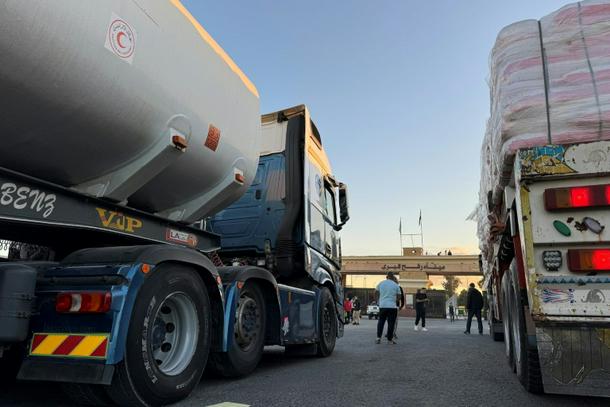
Trucks loaded with humanitarian aid on the Egyptian side of Rafah wait to cross the border
Gaza City (Palestinian Territories) (AFP) - UN humanitarian chief Tom Fletcher urged Israel on Wednesday to immediately open all crossings into Gaza for humanitarian aid, as called for in a US-backed ceasefire plan.
“It should happen now. We want it to happen immediately as part of this agreement,” Fletcher told AFP in an interview in Cairo, ahead of a planned trip to the Gaza border.
Earlier in the day, Israeli public broadcaster KAN had reported that the Rafah crossing point to Egypt would reopen, but this did not happen and an Israeli spokesperson did not respond to an AFP request for comment.
Fletcher, the UN under secretary-general for humanitarian affairs and emergency relief is expected to head to the Rafah crossing on Thursday. It is the only border point that connects Gaza to the world without passing through Israel.
US President Donald Trump and regional leaders on Monday signed a declaration in the Egyptian resort of Sharm el-Sheikh to cement the deal.
“But the test of this agreement is not the photos and the press conferences and the interviews,” Fletcher said.
“The test is that we have children fed, that we have anaesthetics in the hospitals for people getting treatment, that we have tents over people’s heads.”
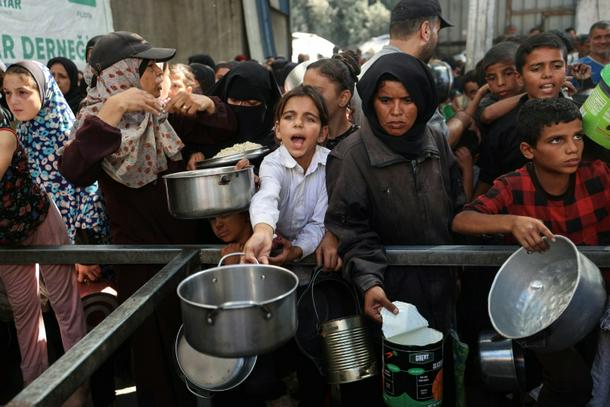
The return of aid is listed in Trump's 20-point plan for Gaza
Israel currently allows humanitarian aid into the Palestinian territory through other checkpoints under its control, but aid agencies complain that bureaucracy and security controls slow the flow of life-saving supplies.
“We want all of those crossings open and we want completely unimpeded access,” Fletcher said, adding that Trump and other world leaders at the summit “were unequivocal that we must be allowed to deliver aid at massive scale”.
- Two more bodies -
Meanwhile, under the Trump plan endorsed by international mediators, Israel and Hamas are expected to continue their exchange of human remains.
The swap has seen the last 20 surviving hostages return home in exchange for nearly 2,000 Palestinian prisoners freed from Israeli jails.
So far, Hamas has handed back the remains of seven of 28 known deceased hostages – along with an eighth corpse which Israel says is not of a former hostage.
Late on Wednesday, the Israeli military said the Red Cross had picked up two more coffins in northern Gaza containing the remains of hostages and that it would transfer these to the military to be brought home.
Hamas’s armed wing had confirmed it would hand over two more bodies, but warned that these would be the last for now, as it had recovered all those it could reach – falling far short of the target demanded under the plan.
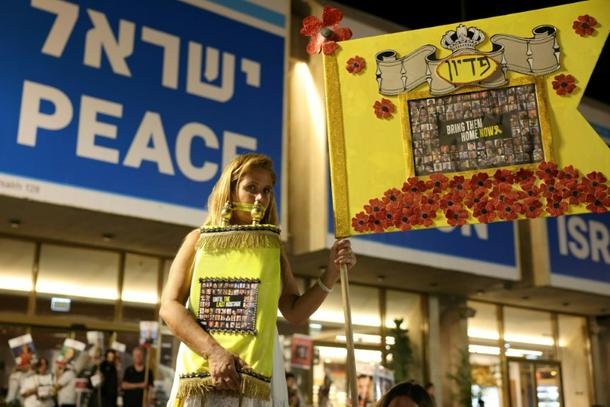
Israeli protesters are demanding the return of the remains of all hostages
“The Resistance has fulfilled its commitment to the agreement by handing over all living Israeli prisoners in its custody, as well as the corpses it could access,” the Ezzedine Al-Qassam Brigades said in a statement on social media.
“As for the remaining corpses, it requires extensive efforts and special equipment for their retrieval and extraction. We are exerting great effort in order to close this file.”
This is likely to pile further domestic pressure on Prime Minister Benjamin Netanyahu to tie aid to the fate of the bodies.
Israel’s far-right National Security Minister Itamar Ben Gvir has threatened to cut off aid supplies to Gaza if Hamas fails to return the remains of soldiers still held in the territory.
- Humanitarian risk -
Israel, meanwhile, transferred another 45 Palestinian bodies that had been in its custody to Nasser Hospital in southern Gaza, bringing the number returned to 90, the territory’s Hamas-run health ministry said.
Under the Trump plan, Israel is to return 15 Palestinian dead for every deceased Israeli hostage.
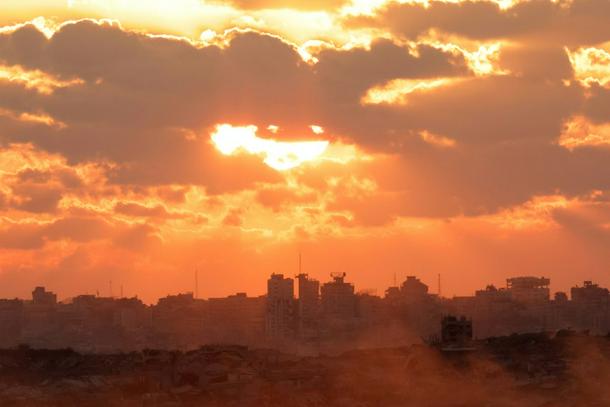
The war has destroyed large swathes of Gaza
Gaza’s civil defence agency, which operates as a rescue force under Hamas, said Israeli fire killed three Palestinians on Wednesday, including two while trying to reach their homes in the Shujaiya neighbourhood of Gaza City.
The Israeli military said that “several suspects were identified crossing the yellow line and approaching” troops in the northern Gaza Strip, referencing the line to which Israeli forces have pulled back to under the ceasefire deal.
The military said this “violates the agreement” and “troops removed the threat by striking the suspects.”
The war sparked by Hamas’s October 7, 2023 attack on Israel led to a humanitarian catastrophe in Gaza, with the densely-populated territory reliant on aid that was heavily restricted, when not cut off outright.
At the end of August, the United Nations declared a famine in Gaza, though Israel rejected the claim. The return of aid is listed in Trump’s 20-point plan for Gaza.
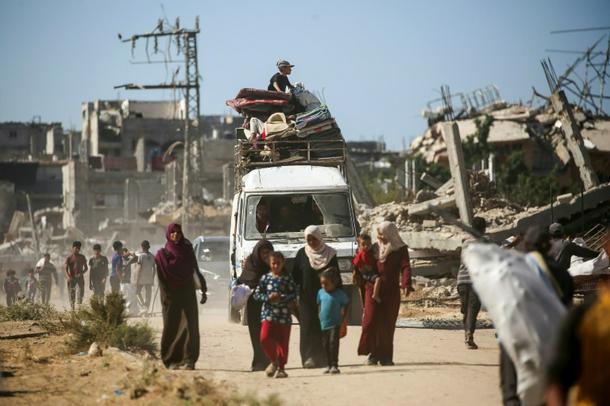
Most Gazans were displaced at least once during the war
Another political challenge is Hamas’s disarmament, a demand the militant group has refused to countenance.
The group is tightening its grip on Gaza’s ruined cities, but Israel and the United States insist Hamas can have no role in a future Gaza government.
burs-dc/acc/dcp